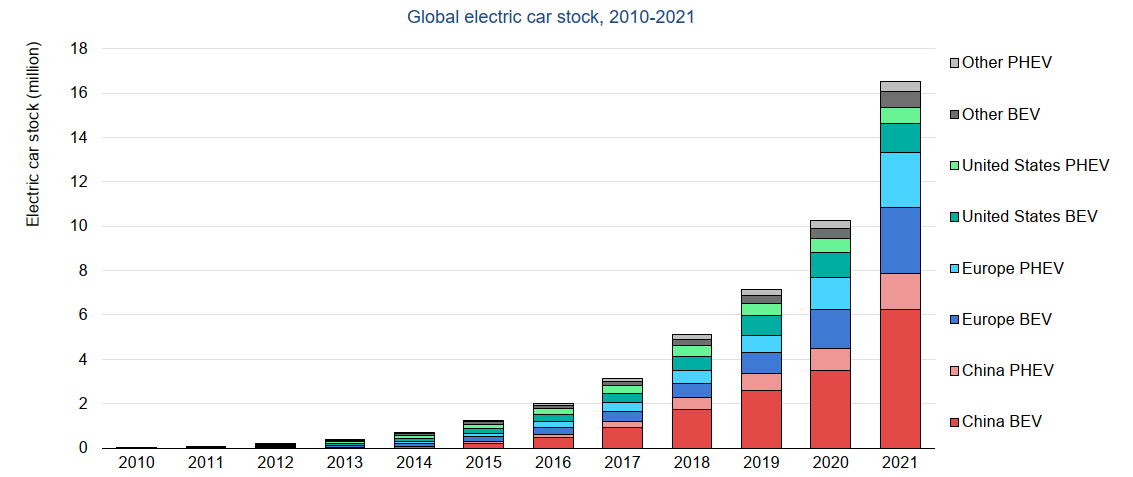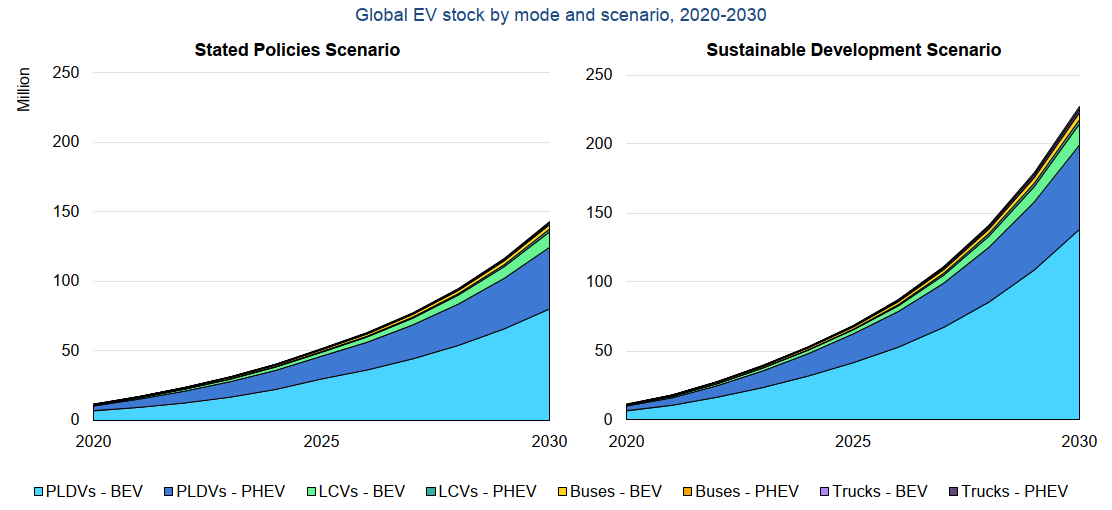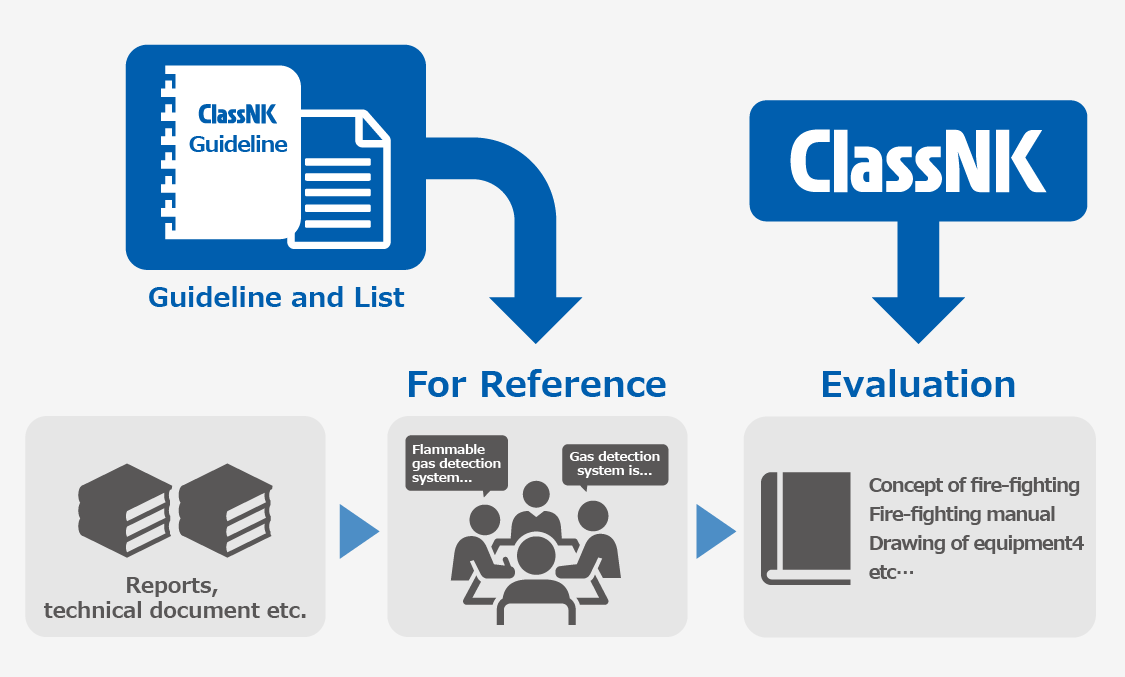Safety Measures for Maritime Transportation of Electric Vehicles
Fire safety measures for ships are specified in SOLAS Chapter II-2 and these requirements have been amended as needed over the years, particularly in response to catastrophic ship fire accidents. The latest fire safety measures (as of 2023) required by SOLAS Chapter II-2 for vehicle carriers are shown on the following page.
Fire safety measures required by SOLAS Chapter II-2 for vehicle carriers
In response to several reports of fires breaking out in the vehicle spaces of large vehicle carriers primarily carrying gasoline-powered vehicles, a study of safety measures for avoiding such accidents and minimizing cargo damage during such accidents was carried out from December 2019 to June 2021. The study was led by the Japanese Government’s Ministry of Land, Infrastructure, Transport and Tourism (MLIT) and its participants included members from relevant industries, various national universities and research institutes, and ClassNK. Upon the conclusion of the study, ClassNK issued Technical Information TEC-1239 titled “Improvement measures to reduce the damage generated by fire accident on large size Vehicle Carriers -Effective use of fixed foam fire-extinguishing systems-” to provide information on the study and the “Measures for effective use of fixed-foam extinguishing systems” developed as a result of the study.
TEC-1239
In recent years, there has been an increase in the number of electric vehicles being transported as cargo by ships. This is largely attributed to corresponding increases in electric vehicle ownership worldwide during the last ten years or so. According to the International Energy Agency (IEA), the number of electric vehicles (hereinafter “EV”) being registered has been increasing exponentially since the end of 2011 (see Fig. 1), and the IEA only expects this exponential increase to continue for at least the next decade (see Fig. 2). Since there are currently no international regulations regarding safety measures for the maritime transportation of EVs, it is imperative that some be developed as soon as possible.

Figure 1 Number of registered EVs (as of December 2021)
(Source:IEA Global EV 2022)

Figure 2 Expected future registered number of EVs by 2030
(Source: IEA Global EV Outlook 2022)
International Efforts in the Safe Maritime Transportation of EVs
Although some governments and regional organizations have already published safety guidelines in response to this increase in the maritime transportation of EVs, there is currently nothing at the international level that can be commonly applied worldwide. The International Maritime Organization (IMO) has tasked its Sub-committee on Ship Systems and Equipment (SSE) to begin discussions on the matter at its 10th session (SSE 10) in March 2024. The IMO has stated it is hoping to have formal regulations developed and ready to take effect sometime before the end of 2027.
ClassNK Efforts in the Safe Maritime Transportation of EVs
Establishing new international regulations and amending existing international conventions can be intricate process that takes a fair amount of time to complete. As stated earlier, the IMO is hoping to have formal regulations in place before the end of 2027, but formal discussions are not scheduled to begin until March 2024. In the meantime, the continuous increase in the maritime transportation of EVs requires that some type of guidance be provided to the international shipping industry due to the ever present risks EV fires pose to ships and their crews. With this in mind, ClassNK has developed its own set of guidelines called the Guidelines for the Safe Transportation of Electric Vehicles (hereinafter “the Guidelines”) to help contribute to the safe maritime transportation of EVs. The Guidelines were developed with the cooperation of maritime fire safety experts, international shipping industry members, maritime fire safety equipment manufacturers, etc. through surveys of relevant literature and various hearings, and they cover the following two main areas.
・EV fire characteristics
The Guidelines provide some general background information regarding the specifications of electric vehicles and electric vehicle batteries (hereinafter “EVB”), particularly lithium-ion type EVBs, which is essential to understanding how EV fires occur and which safety measures are best suited to help not only help prevent them from occurring, but also the best way to respond to them when they do occur.
・EV fire prevention and response measures
The Guidelines provide stakeholders involved in the development of EV fire prevention and response measures with information about approaches which have been tested to work or which otherwise seem effective.
How to Use the Guidelines
The aim of the Guidelines is to assist in the development of fire safety measures for the maritime transportation of EVs and, thus, enhance the overall safety of such transportation for not only ships themselves but also for their respective crews.
To serve as a companion to the Guidelines, ClassNK has also made its “List of Fire Safety Measures for the Maritime Transportation of Electric Vehicles” (hereinafter “the List”) available on its official website. The combination of the Guidelines and the List provides a fairly good understanding of EV fires to those involved in developing effective EV fire safety measures in terms of ways to combine systems and equipment appropriate to EV fire progress and scale. Since there currently exist no consensus on the best fire-fighting and fire-extinguishing systems and equipment to adopt for EV fires, neither the Guidelines nor the List make any such recommendation. Rather, information on the advantages and disadvantages of various measures are provided allowing informed decisions to be made on a case-by-case basis.
For those shipowners and ship management companies applying the Guidelines, ClassNK provides a corresponding voluntary verification service that includes the affixation of specific notation to ship classification characters in accordance with the types of safety measures implemented.
- Guideline for the safe transportation of Electric Vehicles(Edition 2.0) (Last updated: Dec. 2024)
- “List of Fire Safety Measures for the Maritime Transportation of Electric Vehicles” (Last updated: Oct.2023)
- "Risk Assessment related to the Safe Escape from a Car Carrier"

How to Apply for a Notations
For applying for receiving the notation described in the Guidelines, please complete the following application form and submit it to the Materials and Equipment Department.
Relevant IMO Timeline
7th session of Sub-committee on Ship System and Equipment (SSE 7) held in March 2020
China submits proposal related to the fire safety requirements for ships carrying new-energy vehicles such as electric vehicles (hereinafter “new-energy vehicles”). (SSE 7/6/6, SSE 7/6/7, and SSE 7/INF.11)
104th session of Maritime Safety Committee (MSC 104) held in October 2021
China submits proposal for a new plan for developing fire safety requirements for ships carrying new-energy vehicles. (MSC 104/15/19)
105th session of Maritime Safety Committee (MSC 105) held in April 2022
Committee agrees to begin discussing amending SOLAS and the FSS Code to incorporate new fire safety requirements for ships carrying new-energy vehicles and also said amendments on 1 January 2028.
9th session of Sub-committee on Ship System and Equipment (SSE 9) held in February 2023
・Japan submits an information paper on experimental tests related to using outside air type high-expansion foam fire-extinguishing system to extinguish lithium-ion-battery-powered vehicle fires. (SSE 9/INF.4)
・China submits an information paper on the maritime transportation of new-energy vehicles. (SSE 9/INF.6)
107th session of Maritime Safety Committee (MSC 107) held in June 2023
・Committee agrees to add discussion related to fire safety requirements for vessels carrying new-energy vehicles to its agenda for the 2024-2025 biennium, and sets the target completion year for this discussion as 2027.
・Committee agrees to add fire safety requirements for vessels carrying new-energy vehicles to the proposed provisional agenda for SSE 10 scheduled for March 2024.
10th session of Sub-committee on Ship System and Equipment (SSE 10) to be held in March 2024
Sub-committee to begin discussing fire safety requirements for ships carrying new-energy vehicles.
Contact
Material and Equipment Department, ClassNK
Tel: +81-3-5226-2020Fax: +81-3-5226-2057
e-mail: eqd@classnk.or.jp